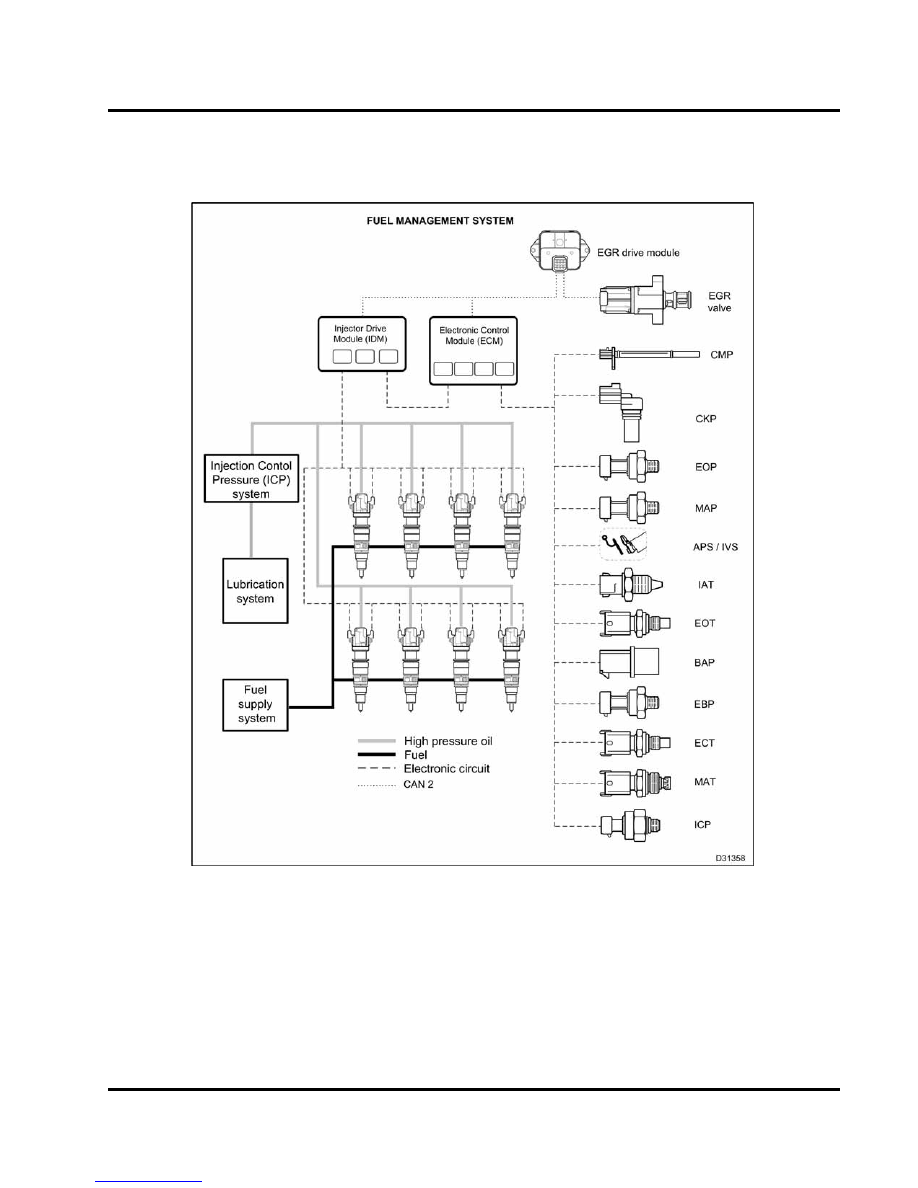Engine International VT365. Manual - part 7

ENGINE SYSTEMS
25
Fuel Management System
Fuel Injection
Figure 20 Fuel management system
The fuel management system includes the following:
•
Injection Control Pressure (ICP) system
•
Fuel injectors
•
Electronic control system
•
Lubrication system
•
Fuel supply system